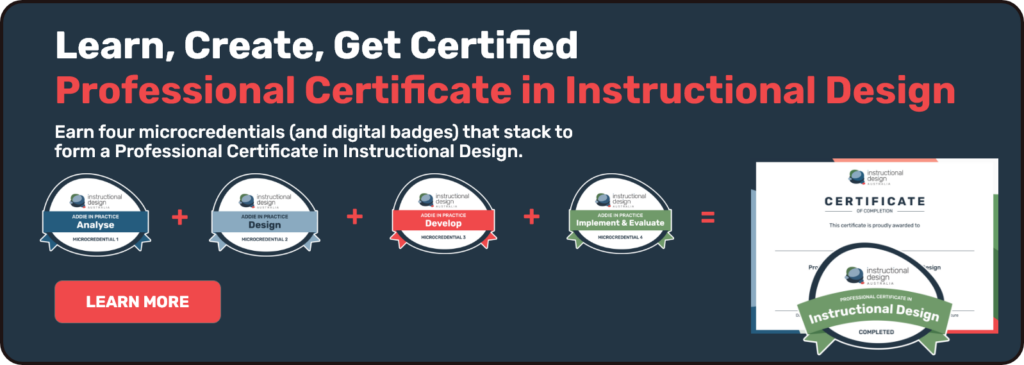Applying Problem Based Learning (PBL)
What is Problem Based Learning (PBL)?
Problem Based Learning (PBL) is a method in which learners are immersed in solving real-world problems.
PBL is based on the Constructivist Theory of Learning. Theorists such as Vygotsky, Piaget and Bruner each contributed to constructivism – a theory in which learners actively construct their own understandings via engaging hands-on learning experiences that reflect the real world. [1]
This offers authentic, directly relevant learning experiences. PBL supports active and meaningful inquiry and knowledge-based approaches to problem solving. [2]
PBL fosters the development of key skills such as critical thinking, metacognitive skills, creativity and innovation.
Skills Demand
The Future of Jobs Report 2018 from the World Economic Forum has identified the top ten skills required in 2018 and those required in 2022. [3]
PBL incorporates many of the 2022 skills, including:
- Analytical thinking and innovation
- Active learning and learning strategies
- Creativity, originality and initiative
- Critical thinking and analysis
- Complex problem-solving
So how do we, as Instructional Designers, provide learning experiences that ensure learners develop these skills?
Teaching Strategies
Implement PBL by designing learning experiences that:
- Guide and support learners to actively construct their own learning, as opposed to providing information to passive receivers
- Allow learners to take the lead, and scaffold by observing, noticing, reflecting and responding
- Personalise learning, connecting with learners’ individual styles and creativity, and providing opportunity for extension
- Allow learners to work in multiple directions, guiding students through questioning
- Implement multifaceted assessment through meaningful, ‘connected’ contexts throughout a program
Problem Based Learning Framework (PBL Framework)
The diagram below illustrates the key PBL elements:
Problem Based Learning Model (PBL Model)
A summary of the end-to-end problem based approach to learning:
Barrows Problem Based Learning
Howard Barrows, a physician and medical educator, realised that university students in the medical industry were passive recipients to knowledge in the traditional memory-based learning approach. [4] Medical students were absorbing knowledge with little opportunities to actually use it. Further, students were unmotivated because they couldn’t see the relevance of their learning to their future profession. [5]
Barrows used problem based learning to focus not only on knowledge acquisition, but also knowledge application and extension. He believed that whilst knowledge is essential, one’s ability to apply that knowledge to various contexts and extend knowledge for lifelong learning are also crucial.
According to Barrows:
“(1) an essential body of knowledge, (2) the ability to use… knowledge effectively in the evaluation and care of… patients’ health problems, and (3) the ability to extend or improve that knowledge and to provide appropriate care for future problems which they must face” [6]
His key objective was to ensure knowledge is “retained, retrieved, and later used”. [7]
How DLD Uses Problem Based Learning
We use problem based learning for our clients in various fields. For example, in more technical areas such as rail signalling, we have created complex faults that must be identified and rectified to apply and extend knowledge. In corporate environments, we have developed real-world ‘problem’ simulations that require participants to collaborate and work together to solve, fostering teamwork and interdisciplinary skills.
Summary
PBL is an engaging learning approach in which learners construct their own knowledge through relevant, challenging problem-solving and sustained inquiry. Learners are self-directed, develop metacognitive skills and ‘learn how to learn’ – key elements to effective workplace performance.
Related Articles and Blogs
Read more of our blog articles here.
References
[1] David L, “Constructivism,” in Learning Theories, June 20, 2015, https://www.learning-theories.com/constructivism.html.
[2] De Simone, Christina. (2008). Problem-Based Learning: A Framework for Prospective Teachers’ Pedagogical Problem Solving. Teacher Development. 12. 10.1080/13664530802259206.
[3] World Economic Forum (2018). The Future of Jobs Report 2018. retrieved from http://www3.weforum.org/docs/WEF_Future_of_Jobs_2018.pdf
[4] Barrows, H. S., & Tamblyn, R. (1980). Problem-based learning: An approach to medical education. New York: Springer
[5] Loyens, S. M. M., Kirschner, P. A., & Paas, F. (2012). Problem-based learning. In K. R. Harris, S. Graham, & T. Urdan (Eds.), APA Educational Psychology Handbook: Vol 3. Applications to learning and teaching (pp. 403-425). Washington: DC: American Psychological Association. doi:10.1037/13725-016
[6] [7] Barrows, H. S. (1985). How to design a problem-based curriculum for preclinical years. New York: Springer.
Contact Us
Contact Details
Office
E: info@discoverlearning.com.au
Ph: 1300 528 736
Michael Peart
E: michael@discoverlearning.com.au
Ph: 0434 075 231
Bianca Schimizzi
E: bianca@discoverlearning.com.au
Ph: 0416 013 623







